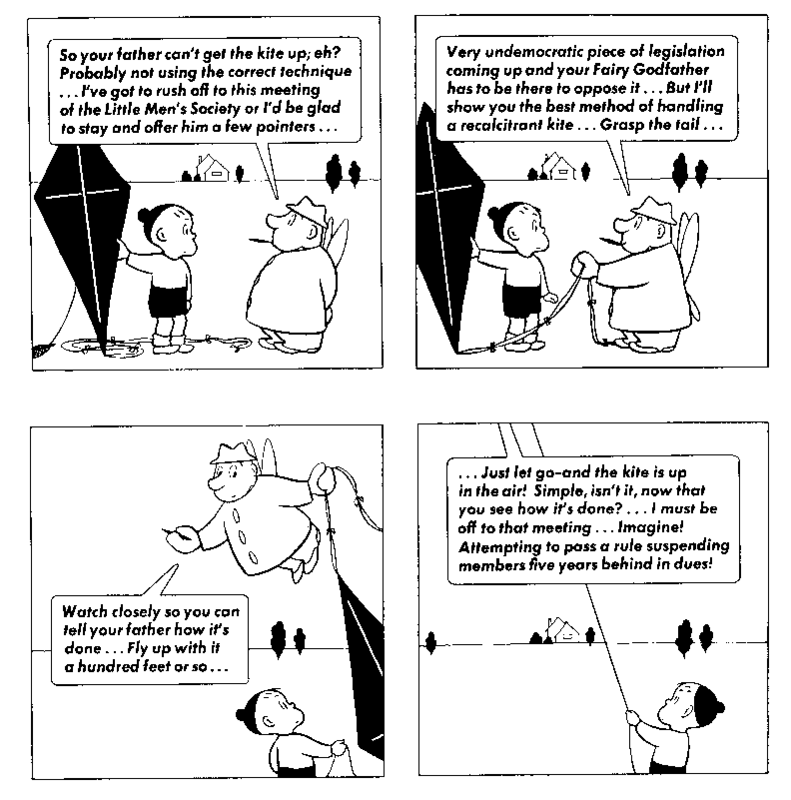I haven't done much since joining this blog because I haven't finished reading much (in my approved area of expertise) since joining. Mostly, comicswise, I've been reading DC stuff I borrowed from Ben. But as I do finish things, I will be reporting on them.
In the meantime, I will present you with a three-part report on the best indie stuff I've read this year (although there is one Vertigo title included). Not all of it was new this year (if you expect me to only report on what's cutting edge, you'll need to get Fantagraphics and SLG and so forth to start sending me stuff for free. I'll be happy to pick it up at Comic Relief if that's more convenient for you guys.)
This issue we'll start with a look at a kids' collection edited by that legendary comix pair Spiegelman and Mouly:
Strange Stories for Strange Kids
- This collection wasn't as slambang awesome as I expected, but overall it was pretty good and some of the pieces were excellent. It's a good gift to introduce kids into comics other than Superman and Garfield. (Although, if they much read Garfield, please wean them to this as soon as possible. Incredibly, a book will soon be published. Sort of makes you rethink everything you ever thought about Jim Davis, doesn't it?)
Barnaby
- Strange Stories included the opening to Johnson's newspaper comic Barnaby. It's a testament to how much newspaper comics have changed over the years that I can't even imagine how this strip was published back then. But however it fit in the holes left by advertising, it's wonderful and brilliant and it's highly upsetting that Barnaby is out of print. I hope Fantagraphics, which is doing such marvelous work with Krazy Kat and Dick Tracy and even Dennis the Menace for heaven's sake will pick up Barnaby soon and give us the tale of a young boy and his chainsmoking fairy godfather in beautiful hardcover.
Complete Peanuts by Charles M. Schultz
- Speaking of Fantagraphics's volumes of newspaper comics, we can't forget their greatest service, the reprinting of every Peanuts ever. Holy crap these books are beautiful and fun and sometimes even moving and yes you should buy them all for your personal library even given our current economy. No question.
The Trial of Colonel Sweeto and Other Stories
- It's borderline impossible to give justice to the broad expanse of PBF wickedness, so click this one and browse some more:

Before we go this time, let's look at some comics best known for winning some serious award in the field of lit for the under-18 crowd.
The Invention of Hugo Cabret
- This book reads more like watching a movie, and it's alternations between single-spread images and prose is unlike anything else I've read. It's bound to be an important part of the discourse on what comics is and where it's headed, so read it now and don't be left out.
American Born Chinese
- This is a new addition to my basic recommendations for all people trying comics on for the first time. This book is astonishing and pulls stunts only comics can pull. Read.
I know these are just bitesized blurbs, but if you're looking for good reads, these will meet your needs. Expect more year-in-review from me soon.


2 comments:
Thanks for wasting an hour of my time with garfield minus garfield!
Seriously good taste. Can't get much better than American Born Chinese and Strange Stories--though I contest that Peanuts was only funny in the 60s. Not in the 70s, not in the 50s, and we won't even talk 80s or 90s so (actually the initial Peppermint Patty stuff in the 70s is pretty good but still) stick with 60s Peanuts.
.
I disagree with your only-funny-in-the-60s assessment, but even if it were true, I would argue that Peanuts is about a lot more than jokes.
The great things about the Complete Peanuts is seeing these strips, in order, in two-year blocks. It's a very different experience than reading them through the other nearly randomized collections that we've had before.
Part of the joy though, I will admit, is (for instance) seeing Linus for the first time or reading Snoopy's first thought bubble. The real judgment of Peanuts will come when a generation arises that never waited for new strips each morning.
Post a Comment